“Embrace good smells. No cost, no calories, no energy, no time – a quick hit of pleasure.”
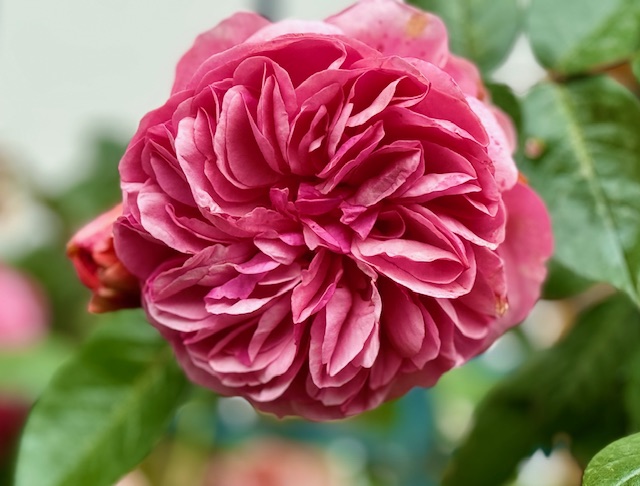
Gretchen Rubin, American author
Cologne, Germany
I have always loved to smell cologne. It conjures up fond memories of growing up in Cuba, where my mother worked in cosmetics. I’d know by her pervasive scent, as she approached home after work, and rounding the corner onto our street. The aroma of the cologne preceded her. It was time to visit Cologne, Germany; never having been to the country.
Eau de Cologne, often simply referred to as cologne, was first invented in Cologne, Germany, hence its name. It was created by an Italian perfumer named Johann Maria Farina in the 18th century. “Eau de Cologne,” Farina’s original formula, was a citrus-scented fragrance made from a blend of essential oils, including lemon, orange, bergamot, and neroli, among others.

Farina’s creation became immensely popular and laid the foundation for the modern cologne industry. No. 4711, Eau de Cologne, is a registered trademark of the oldest perfume brand in the world; now you know, in case of it becoming a “Jeopardy” question.
Our rail trip from Luxembourg to Cologne will take us along the beautiful Moselle River, with its barge traffic and riverboat cruises; its shores dotted with camping spots, and all very picturesque. The Moselle River Valley is also famous for its grapes and the incredible wines produced.
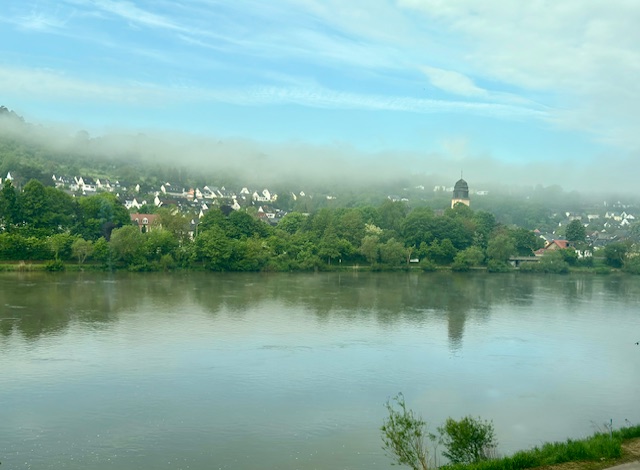
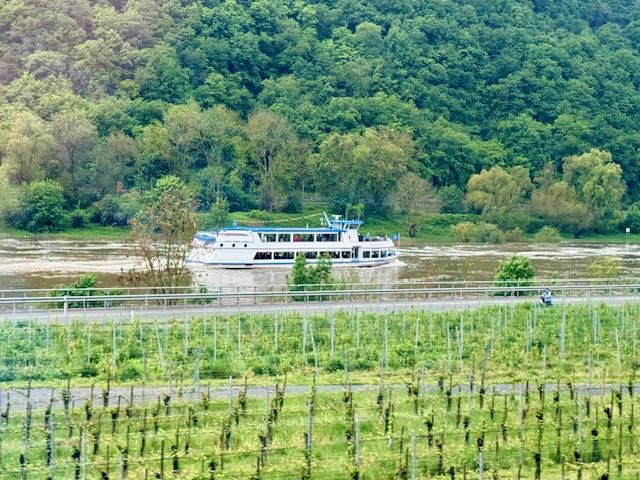
Arriving in Cologne was chaotic, as the train station dumps you right onto the plaza of the majestic and towering Cologne Cathedral. Between tourists and commuters, you’ve got a mass of people congregating within a fairly tight space.
Cologne Central Station, or Köln Hauptbahnhof, is an impressive architectural landmark. Originally built in the mid-19th century, the station has undergone several renovations and expansions, resulting in a blend of architectural styles.
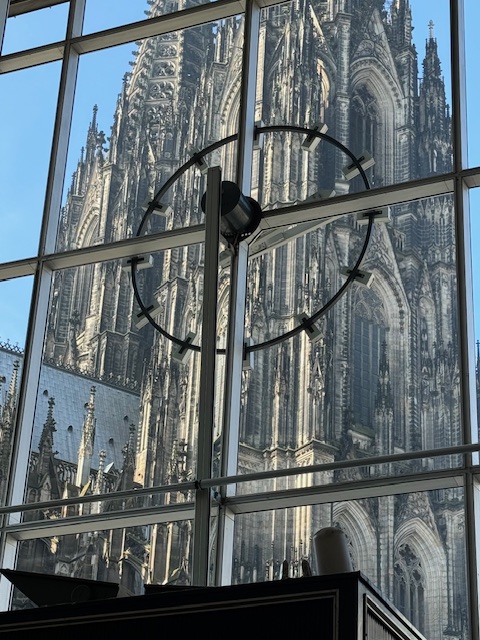

Here’s the funny part … we immediately joined the taxi queue, and then gave our driver our hotel address. He gave us a quizzical look, and then loaded our luggage, driving us around the station and to our nearby hotel!
Had we come out the other station entrance, our hotel was just a short block away. We laughed when I told him that it looked farther on the map. I gave him a good tip, for losing out on a much more lucrative fare.
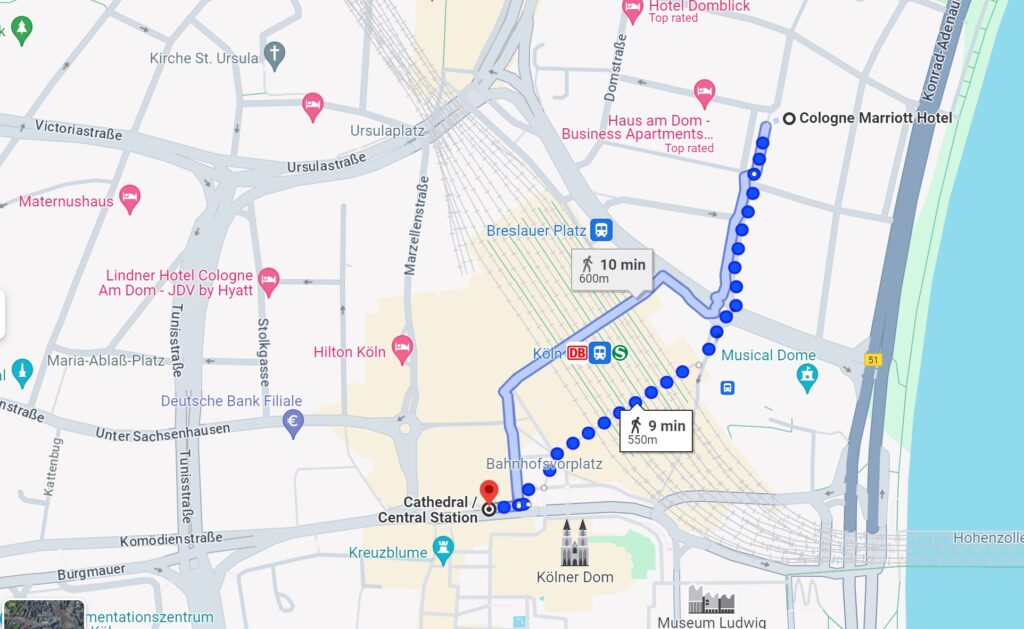
Cologne, Germany, dates back over two thousand years, and is Germany’s oldest city. It’s now a vibrant city known for its rich history, stunning architecture, and lively cultural scene. It’s situated on the Rhine River in the western part of the country.
Cologne Cathedral
The Cologne Cathedral (Kölner Dom) is one of the most iconic landmarks not just in Cologne, but in all of Germany. This spectacular High Gothic cathedral stands as a glorious testament to centuries of history and craftsmanship. No matter from which angle it’s viewed, its magnificence is awe-inspiring.
Construction began in 1248; with completion over 600 years later, in 1880. You’d think they had trouble with the unions! Despite the challenges, the work continued until it gradually took shape over the centuries; with various architects contributing to its design and construction.



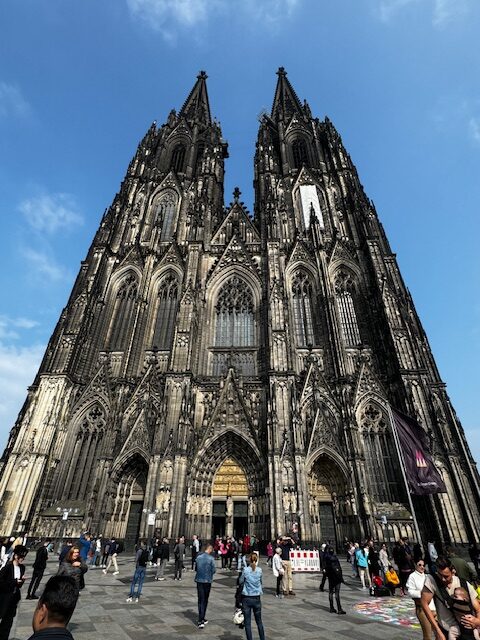
It’s not only a UNESCO World Heritage Site (1996), but also one of the largest cathedrals in Europe. Visitors can climb the cathedral tower for panoramic views of the city and the Rhine River, which we did not, though we had tickets (it’s a long, forgettable tale).
Soaring spires, pointed arches, and intricate stone carvings all contribute to its imposing façade; further adorned with elaborate sculptures depicting biblical scenes and saints.
Inside features a vast interior filled with stunning stained-glass windows, ornate altars, and intricately carved wooden choir stalls. The Shrine of the Three Kings, located behind the high altar, is said to contain the relics of the Magi, making it a significant pilgrimage site.
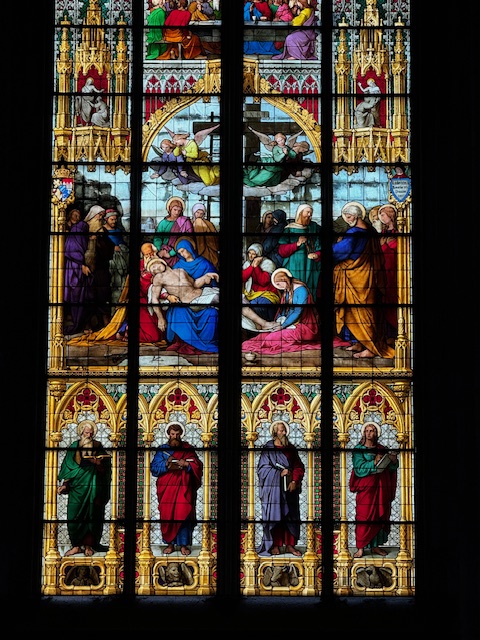


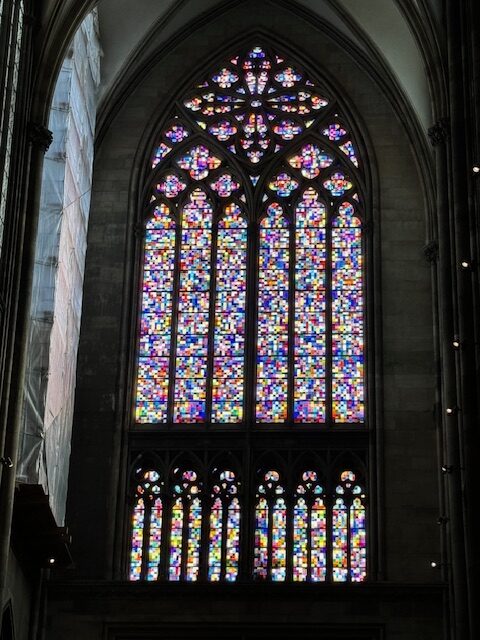
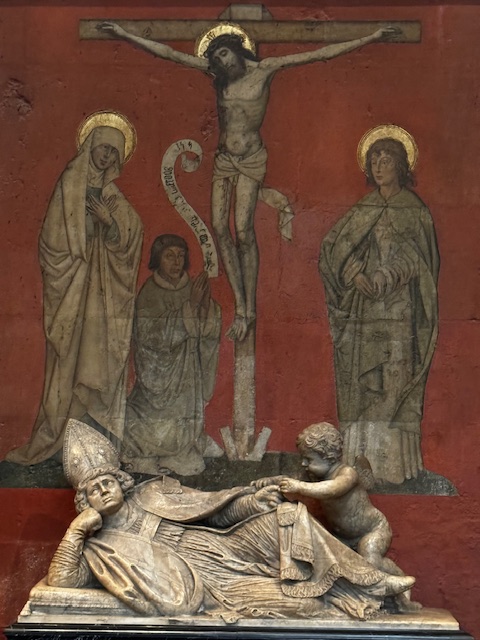
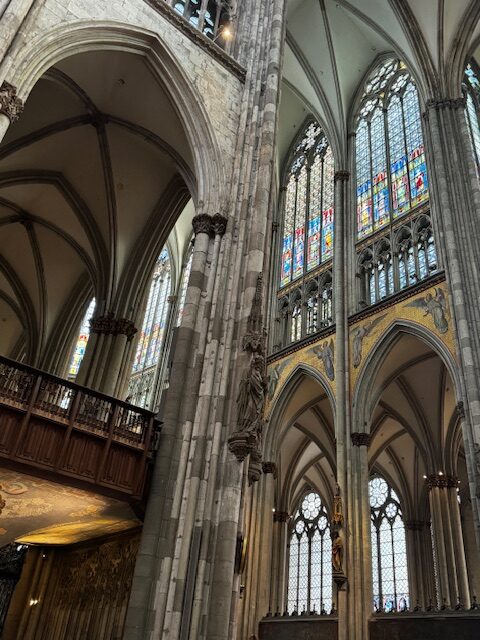

WWII bombing damage was minor. This was due to the Cathedral being recognized by Allied forces to be culturally and historically significant; as well as its status as a symbol of the city. Efforts were made to avoid directly targeting such iconic landmarks whenever possible, to preserve cultural heritage.
Then, too, the cathedral’s massive stone structure and Gothic architecture made it more resilient to bomb damage compared to its surrounding buildings; many of which were made of wood and other less durable materials. Its solid construction helped mitigate the impact of the bombs.
Also, the twin spires of the Cathedral served as a prominent and visual landmark for Allied pilots navigating their aircraft during bombing runs. As a result, there was a concerted effort to avoid hitting the cathedral to maintain navigational reference points.
City Bicycle Tour
A bicycle tour of Cologne was in order; being a fantastic way to experience the historic core’s sights, sounds, and street views up close. Rainer, a retired police officer, led our small group of six. He was friendly, jovial and very informative on all things Cologne; though he maintained a strict Germanic demeanor when it came to following traffic regulations. No one was going down on his watch!
For three hours, our E-bike easily took us about to see the cool sites of the city, all with descriptive and interesting commentary by Rainer. The cool, damp and misty air made bike riding very pleasant. Even the troubling past sites of Nazi Germany were pointed out and gave us time to reflect on the history of those times.
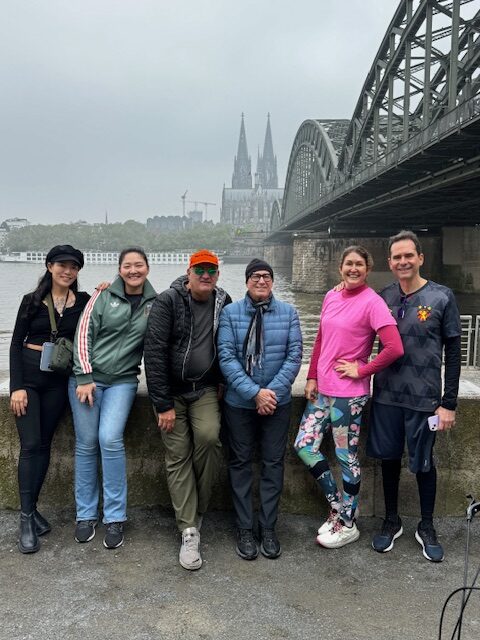
We crossed the Rhine River via the Hohenzollern Bridge, a famous railway bridge adorned with countless hundreds of thousands of love locks. We came upon the Rheinauhafen, a modern waterfront development known for its striking architecture, including the iconic Kranhäuser (crane houses).

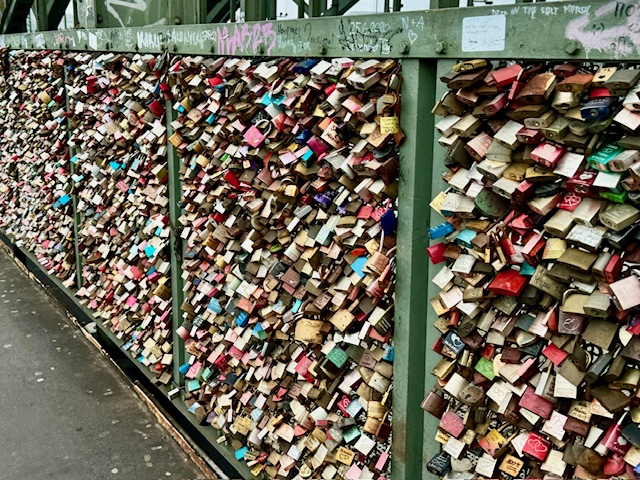
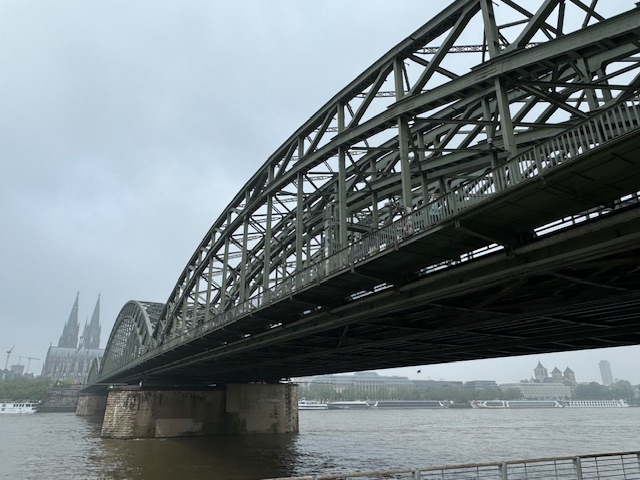

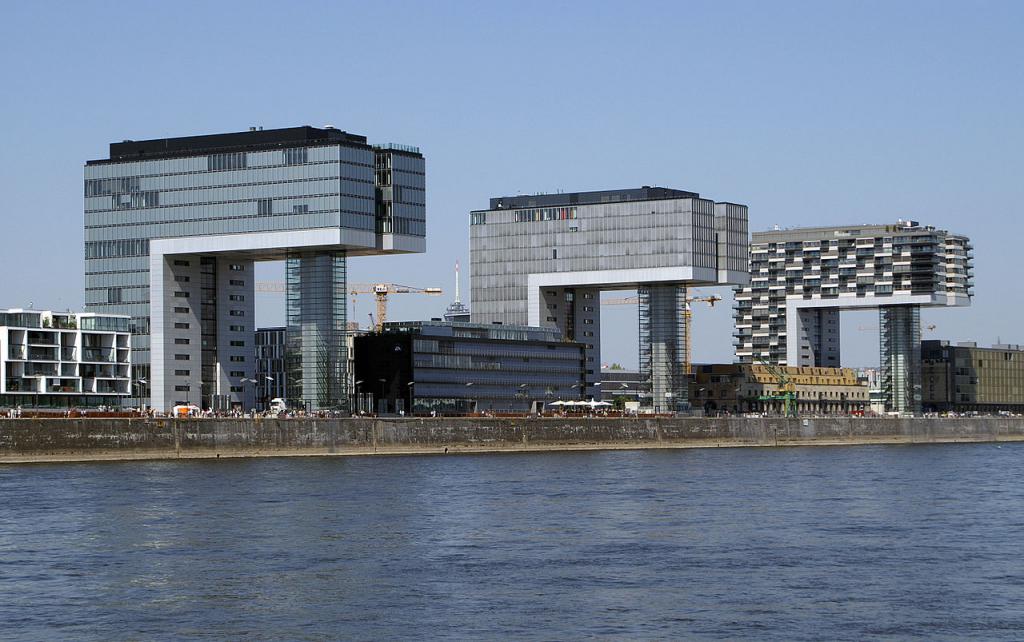
Here, we enjoyed a needed breaktime at a wonderful coffee house along the riverfront, giving us a bit of a rest, and to devour a delicious apple pie and hot chocolate to keep us energized for a trek into …

Cologne’s old town was full of charm and provided a fun challenge, navigating the narrow cobblestone streets; lined with historic buildings, bustling squares, and lively pubs; steering away from pedestrians.
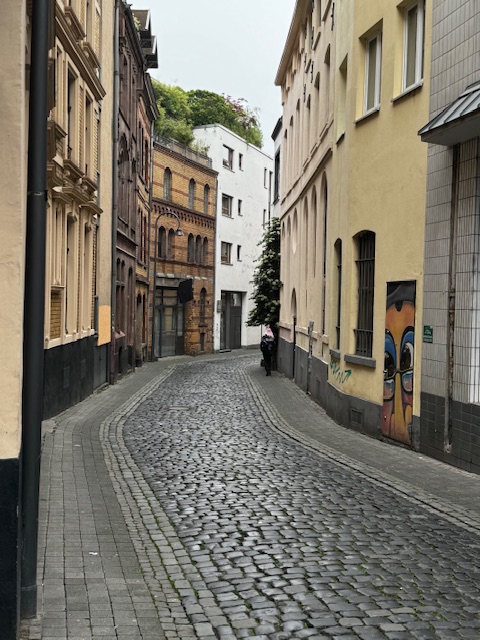
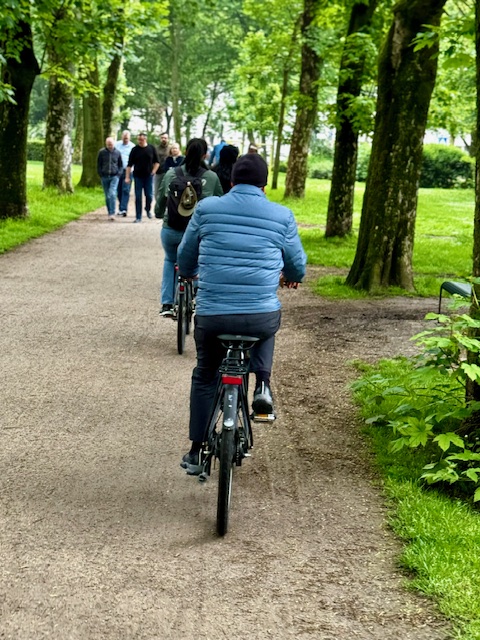


The Grey Bus Memorial commemorates “Aktion T4” during the Nazi era. Grey buses were used by them to pick up psychiatric patients from various sanatoriums and nursing homes; leading them to concentration camps, where they were subsequently murdered.

The Tünnes and Schäl Monument turns out to be the whimsical side of Cologne. These two bronze life-size folkloric statues of Tunnes and Schal, are an immensely popular attraction. They’re considered symbols of Cologne’s rich cultural heritage and its people’s characteristic sense of humor.
We were encouraged to embrace the statues, and ham-it-up, as directed by Rainer, and join in the naivety and whimsy they represent.
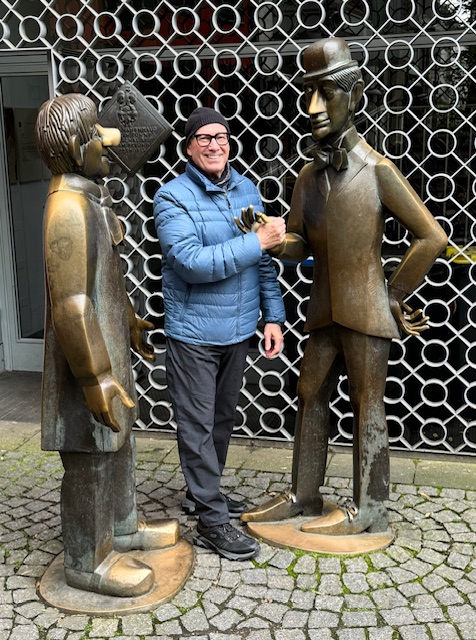

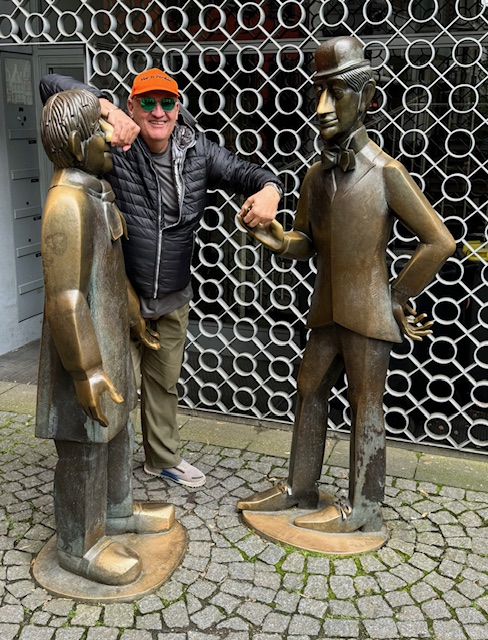
Tünnes is a typical Kölsch (Cologne) character, representing the working-class citizen. He’s often depicted as a somewhat naive, good-natured person who works hard and lives simply.
Schäl, on the other hand, is portrayed as the clever and somewhat sly counterpart to Tünnes. His name “Schäl” translates to “squinting” or “cunning” in the Kölsch dialect, emphasizing his shrewd and sometimes mischievous nature.
During our city center tour, Rainer quickly pointed out a little cubbyhole stand where they sold the best potato pancakes, aka Reibekuchen. Ahh …the wafting aroma of fresh-fried potatoes. By now, you’re familiar with David’s infatuation with fried potatoes. He asked me, as we pedaled away, “Do you think you can find this place again?”

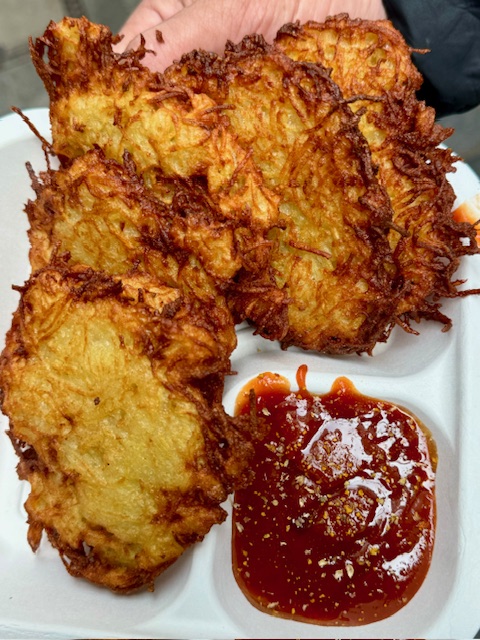
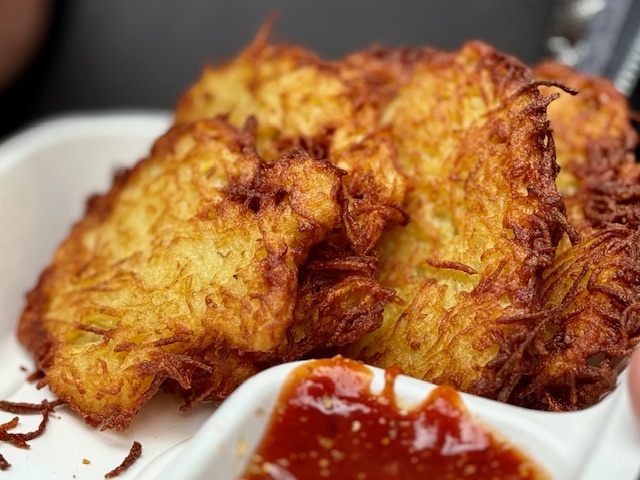
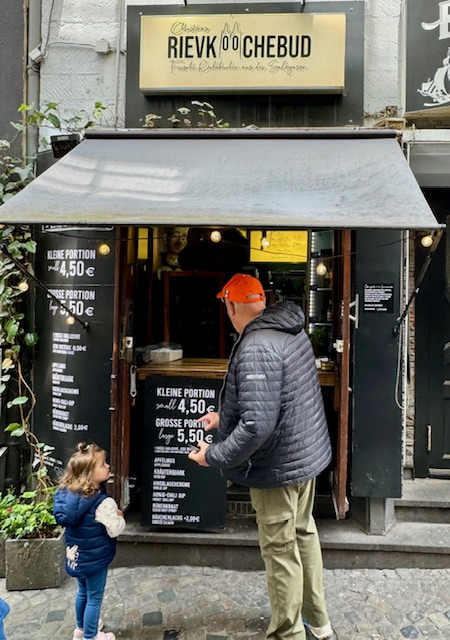
Well, after dropping off our bicycles, I turned into a bloodhound and within a half-hour’s brisk walk, we were standing in line for the most delicious, fluffy, crispy hot fried potato pancakes in the world. They’re remarkably similar to Hanukkah’s potato latkes, but boy! these were a sensational treat, and we couldn’t eat them fast enough with our accompanying sauces. Another outstanding European potato treat to savor.
Wallraf das Museum
The Wallraf-Richartz-Museum & Fondation Corboud is one of Cologne’s most prominent art museums. It’s got an incredible, extensive collection of European art, spanning from the Middle Ages to the early 20th century.
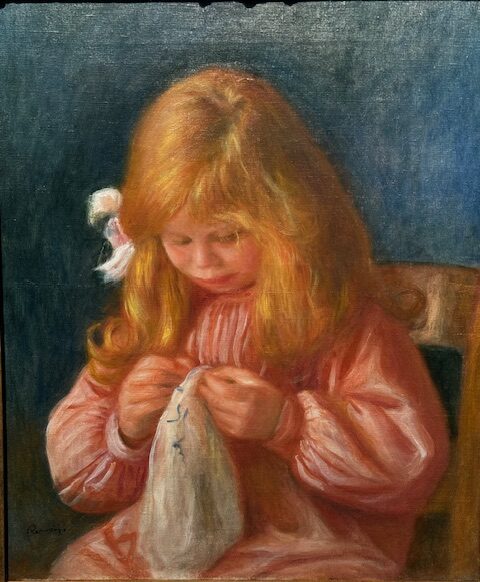


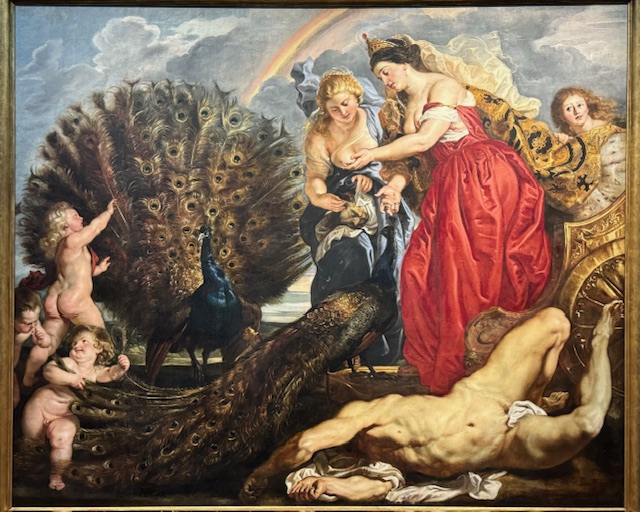
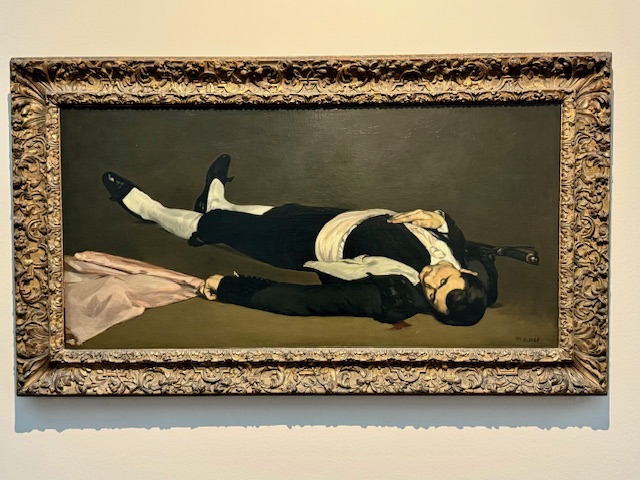
It’s home to remarkable Old Master paintings, including works by: Rembrandt, Rubens, Vermeer, and Dürer. Also, there’s a treasure trove of medieval art, including illuminated manuscripts, sculptures, and religious artifacts.


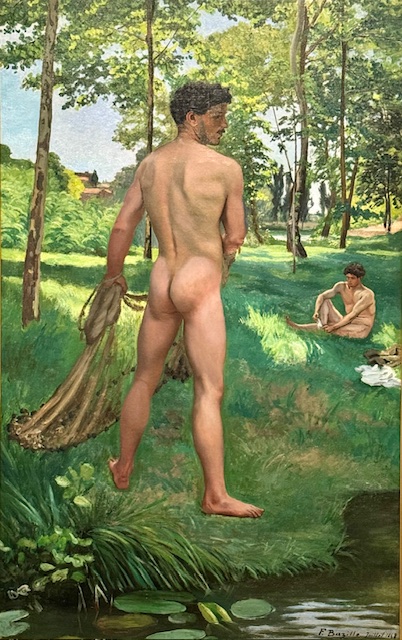
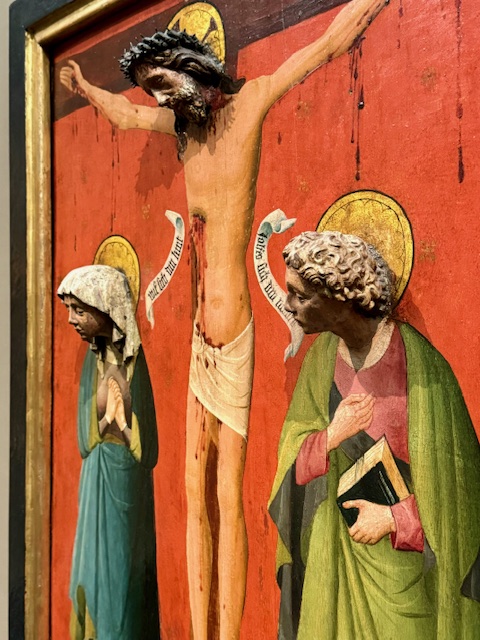
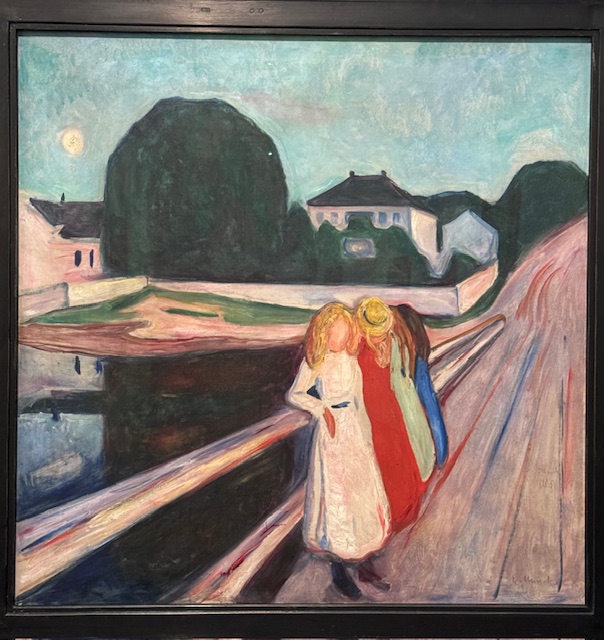
At this point, you all are expecting some tantalizing food photos, but hate to disappoint you, but we weren’t able to muster up much of a food experience in Cologne. A top-rated Chinese restaurant turned out to be like the great Exxon Valdez Oil spill calamity, as the dishes were served floating in oil and tasteless; so during our short visit, we resorted to picking-up sandwiches and German hot, soft pretzels at the train station.

Tomorrow, we’re headed back to Amsterdam to catch a shuttle to the P&O Ferry down in Rotterdam. It will take us across the English Channel to York, our first stop in England, and the second part of this month-long adventure.
As seen on the streets…..
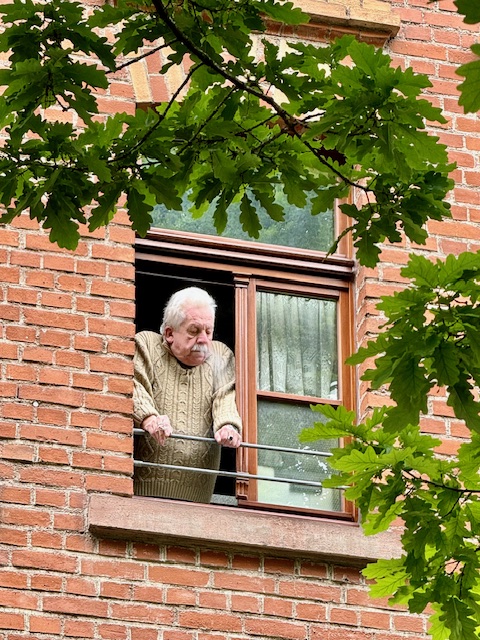

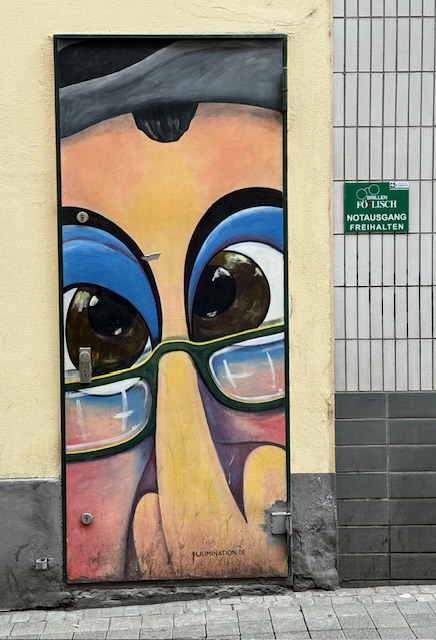
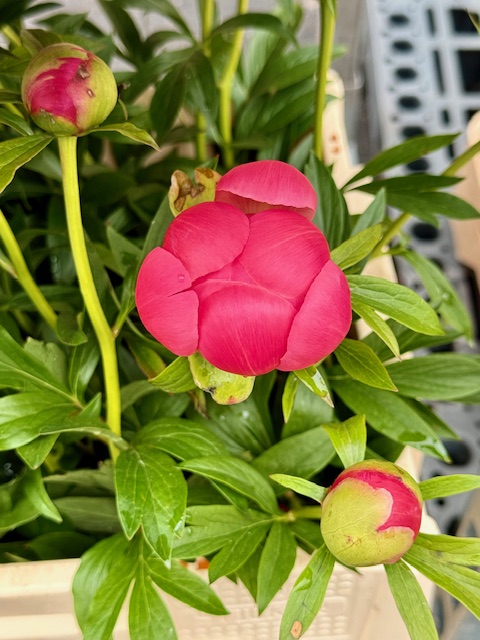

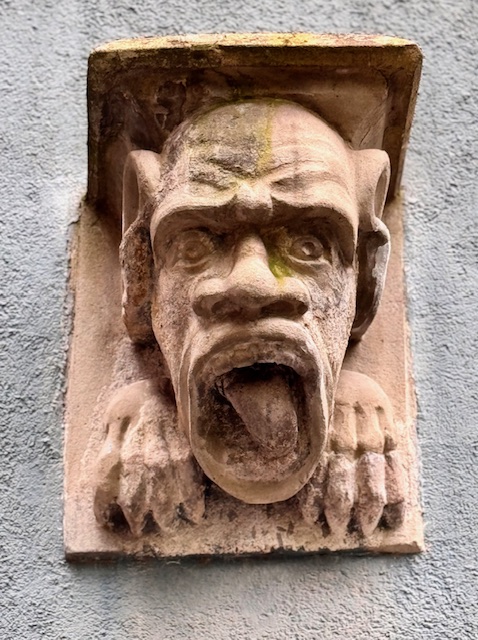
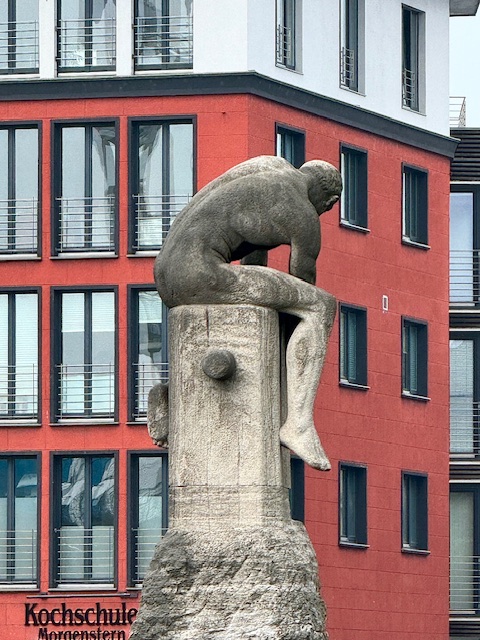

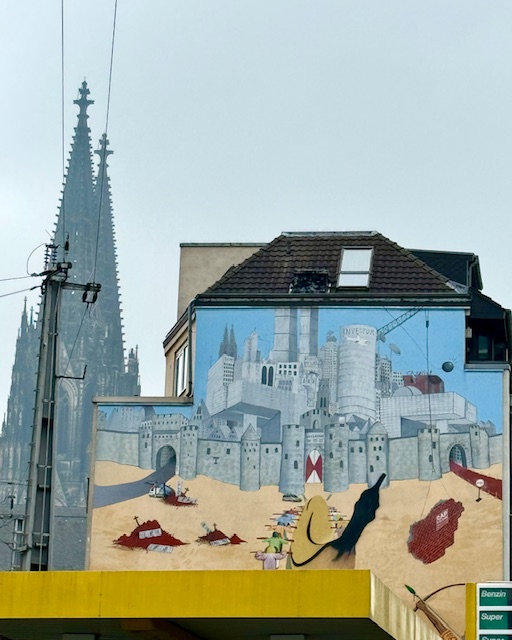
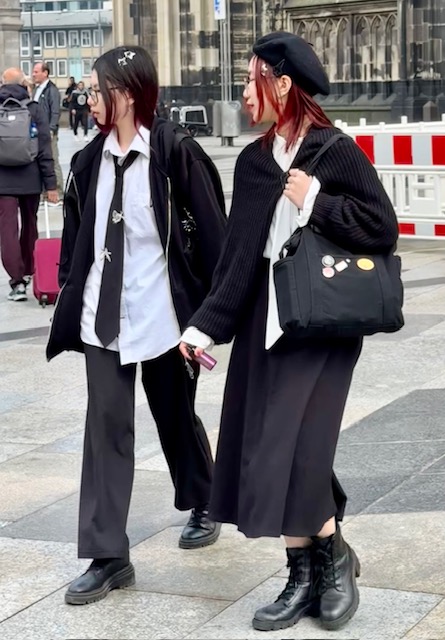


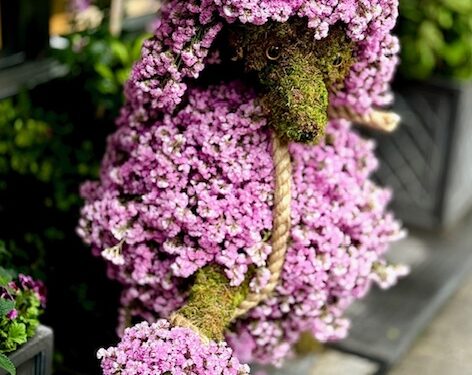
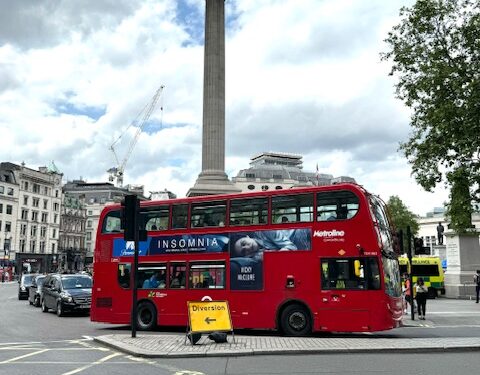
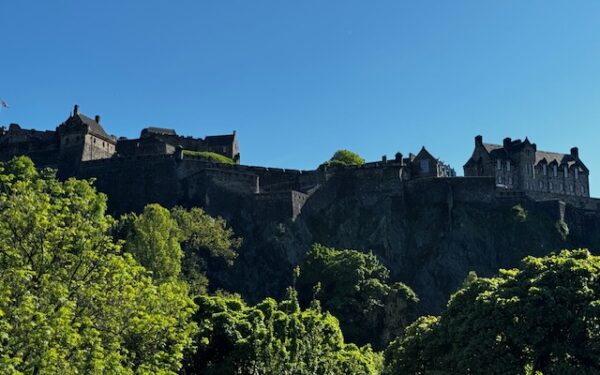
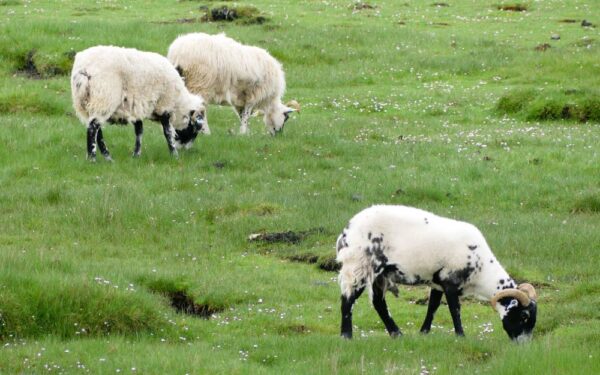
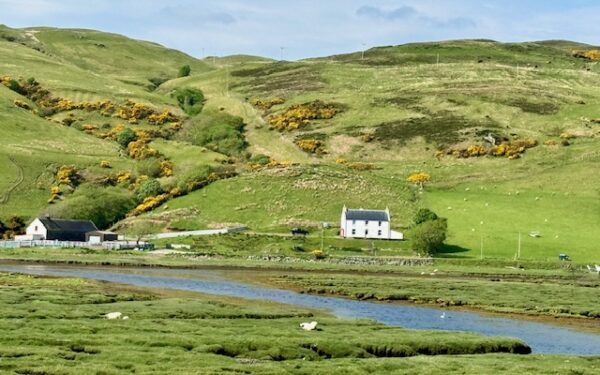
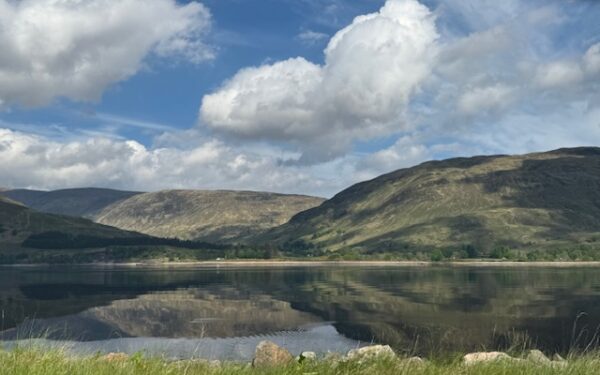
Wow! eautiful city, the cathedral is magnificent! The bicycle tour was a great way to see more of the city. Who doesn’t love fried potatoes? Another fabulous travel destination. I enjoyed it second hand. Thanks for sharing!
The grey bus was haunting…
bicycle tour- proud of david! looks so sun- i barely remember that city- tell you why later–
EW
Cologne Cathedral. What a Gothic marvel! Hot chocolate and Apple Pie sound like one of the main attractions of the 3-hour E-bike Tour, at least for me. Pretzels also a must do, as well as Potato Pancakes.
Tünnes and Schäl Monuments—just plain fun!
As seen … really nice shot of the twin spires. Would love to know what the gentleman in the fisherman’s sweater was thinking as he gazed so intently out his window.